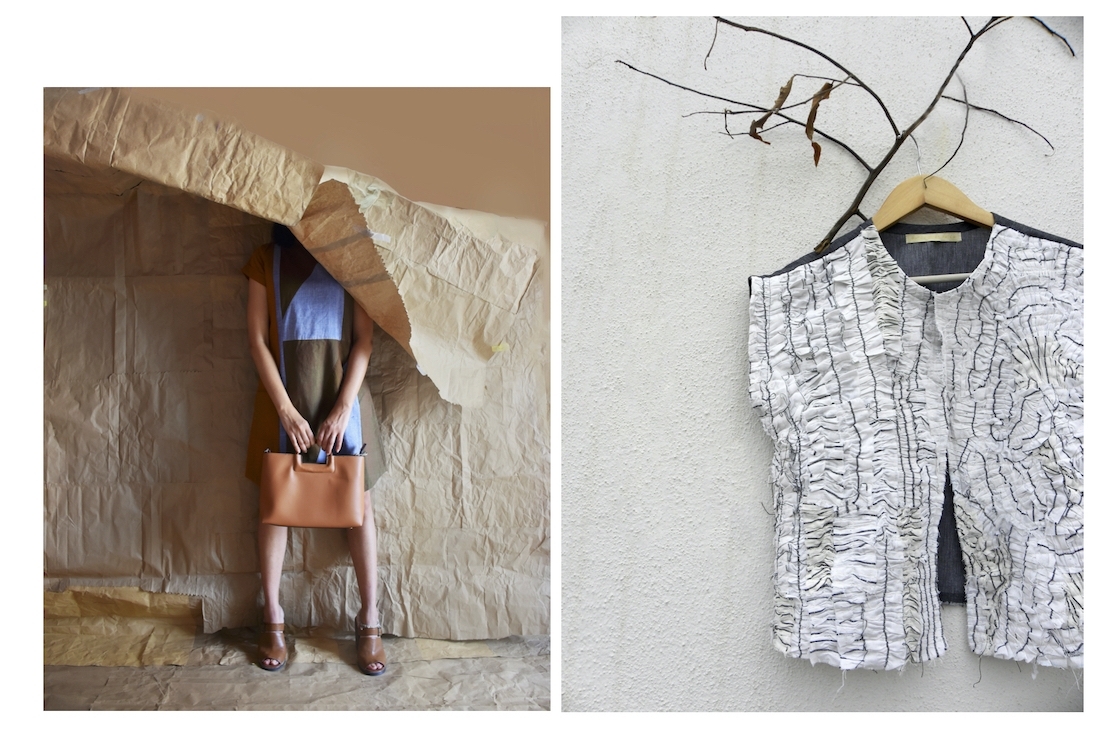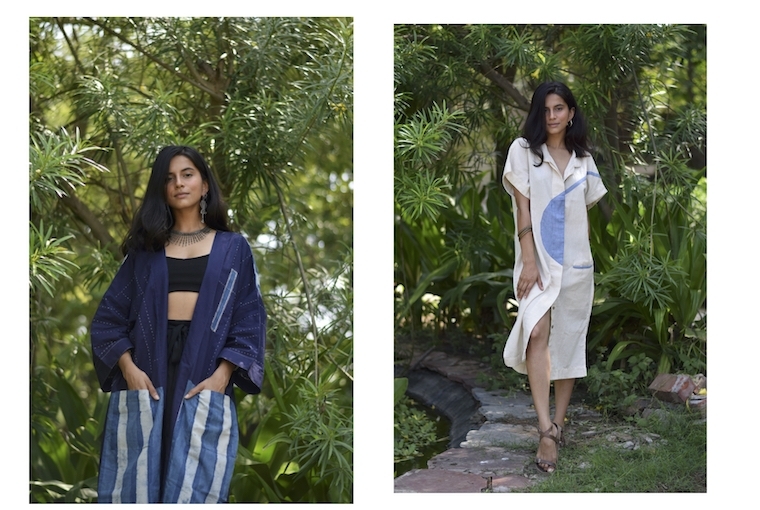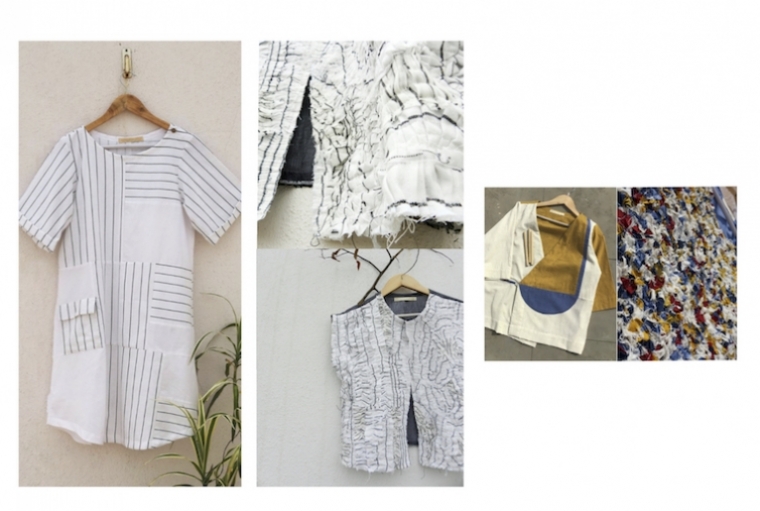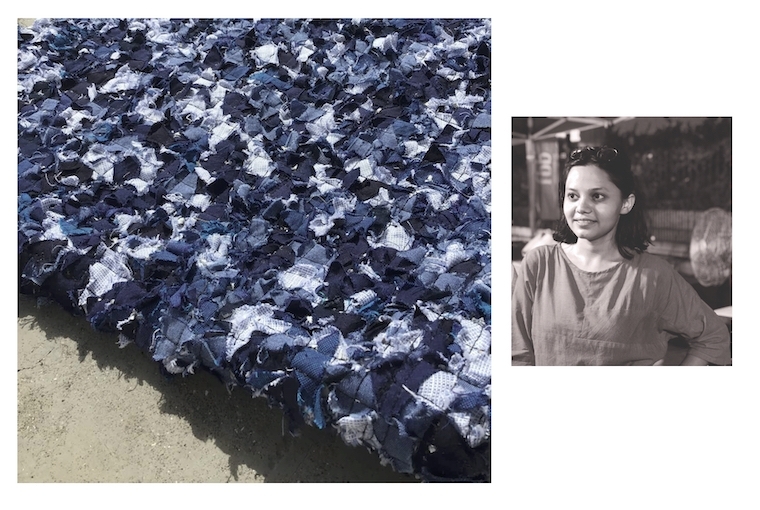

The Designer
Fashion designer Kavisha Parikh had never intended to choose the field of design. She was someone who studied mathematics and physics through high school and intended to study at IIT, but she couldn’t since she wasn’t focused enough. What followed was a year of engineering that left her thoroughly dissatisfied. As a student, she yearned for an interactive and practical teaching system, because of which, she moved onto NIFT. She adds, ‘This helped explore my vision, my observation towards things, my surroundings and towards myself. For me, at college, the focal point included learning about the basics of design — the elements of it and its language.’ It was essentially her love for mathematics and geometry that helped Kavisha develop a keen interest in design.

Patch Over Patch
Since her days at college, Kavisha has been associated with craft clusters and has worked with traditional patchwork or appliqué. She has consciously worked to develop a connection with the theory and ways of sustainable fashion. It’s something that comes naturally to her, she explains, ‘Up-cycling is like my personal playground, where I continuously work or play around with varied materials. The texture, colour and shapes of surplus or purposeless industrial fabrics help me compose clear-linear or curve-geometric patterns.’ What led to Patch Over Patch was a very early project of hers, which featured a series of kimono tops in a plethora of colours, using repurposed fabric. The kimono tops led to a collaboration with a Hong Kong based boutique, after which there was no looking back. She started expanding nationally with successful exhibitions in Surat and Ahmedabad, and continued with building an international clientele in Macau, Dubai and within Europe as well.
The essence of the label can be encapsulated in the work that they do with textile leftovers. As fashion’s waste problem is increasingly growing, Patch Over Patch’s clothes aren’t without meaning. Their carefully crafted silhouettes aren’t only useful due to the remnants they use, but they further work closely with the local artisans in Surat, uplifting the communities. Kavisha’s Patch Over Patch lives by the motto, ‘Know your rhythm.’ She elucidates, ‘It emphasizes upon one’s unique pace and the cycle of work zones. Everybody works by their own rhythm. Life is all about knowing and working within one’s own free space. For us, it starts with choosing the fabric from the markets or textile mills, where we get the discarded pieces from point five to two meters, which is usually ignored due to minor issues like weaving mistakes, printing issues or just that the textile is old. We then, very carefully and consciously, select fabrics. We use local textile leftovers from the Surat or Ahmedabad textile industry to work in an efficient manner.’

From one to another style using the same fabric
Kavisha’s process is truly unique and her own. She begins with intuitive movement meditation and then proceeds by working on the colour that captures the emotions of the material. She enlists her various inspirations that motivate her work, ‘I am influenced by architectural elements, especially Japanese art form, their philosophy of permanence or continuity, block constructions, indigenous functionality with a strong aesthetic unity. I am also inspired by Sonia Delaunay, an artist who lived a philosophy of emotions, delving and creating. She was a key figure in the Parisian avant-garde movement. My college was up in the hills and that made me very attached to nature.’ Currently also fascinated by Show Your Work! by Austin Kleon, her main focus has been reusing things one may already possess and simplifying the workflow to bring forward accessible wardrobe essentials that don’t abuse the environment they’re produced in.
The Pandemic and Beyond
For a startup like Patch Over Patch the pandemic has posed multiple problems. Their production and orders are on hold and they have had to completely rethink their model. Kavisha is working hard on redesigning how things were previously done, to come up with an entirely new outlook that supports their current conditions. The team has started designing cloth masks in an attempt to be able to pay the artisans. The growing emphasis on switching to homegrown goods and services has only made the team’s will stronger. As a label that worked with bringing up-cycling to the mainstream, they understand the importance of being local not just as a mere trend, but also as a means to ensure employment generation within the craft communities.
Talking about the new normal in fashion she says, ‘I think fashion needs to start advocating how less is more. It should begin with owning a few essential styles and mixing those up to create fresh individual styles. We need to foster a holistic approach while designing clothes, to reduce the carbon footprint of the industry.’
Text Unnati Saini

L: Surface made from smaller pieces of leftovers ; R: Kavisha Parikh